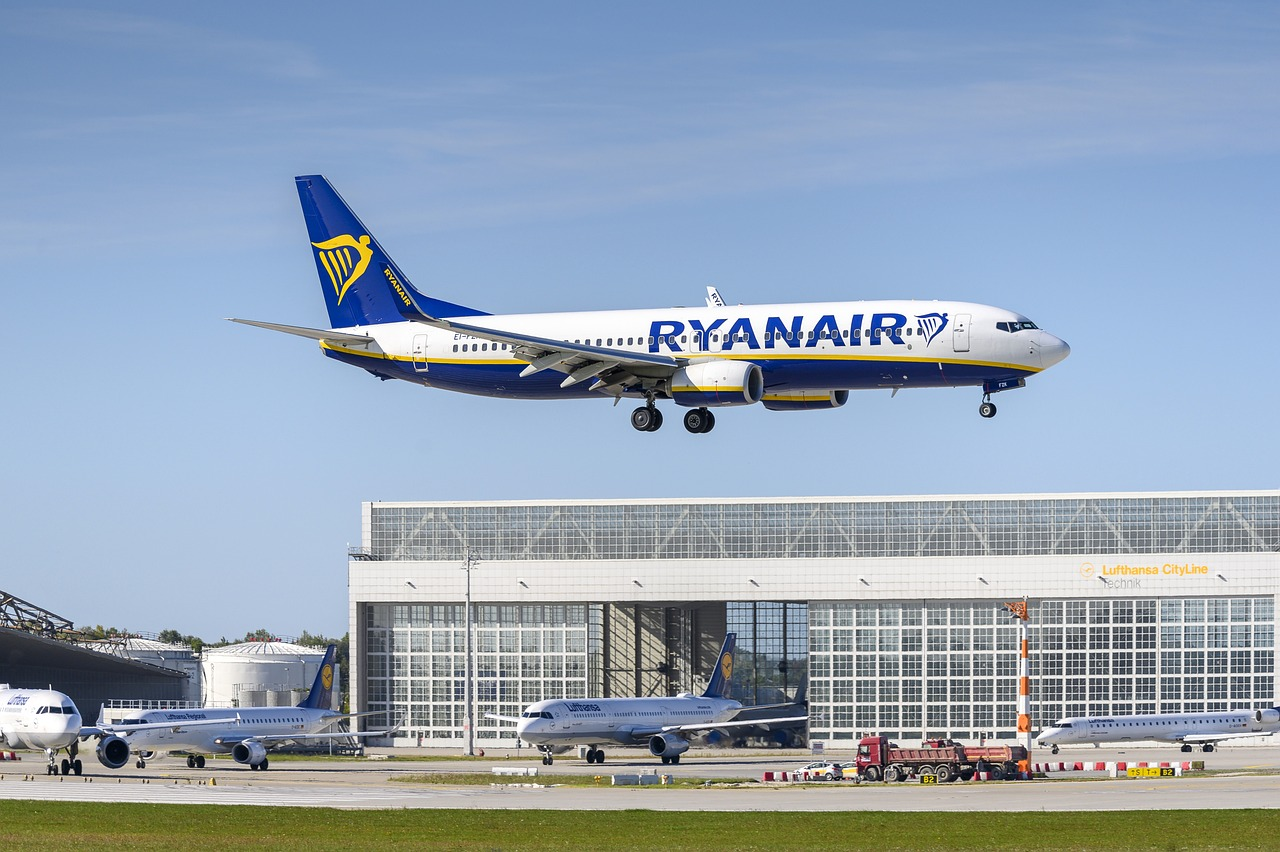
Aerial Advertising Explained: Everything You Need to Know
Aerial advertising has long captured the fascination of both marketers and the public alike.
With its unique ability to reach large audiences unforgettably, it's no wonder businesses of all sizes are intrigued by this marketing strategy. Whether it's a plane trailing a banner across a crowded beach or a skywriting message at a major event, aerial advertising offers a high-visibility, impactful way to convey a brand's message. In this blog, we'll dive deep into the world of aerial advertising, exploring its history, techniques, effectiveness, and how you can leverage it to elevate your marketing efforts.

Types of Aerial Advertising Methods
Aerial advertising comprises several distinct methods, each with its unique advantages and ideal use cases. A brand must consider various factors like budget, target audience, and campaign goals to determine which method is the best fit for their marketing strategy. Let's take a closer look at some of the most popular aerial advertising methods. First, we have airplane advertising banners, which involve attaching a banner to the back of an airplane and flying it over a specific area. This method is particularly effective for heavily populated areas like beaches or sports events where there's a high concentration of people.
Next, we have skywriting, where planes emit smoke to spell out letters or words in the sky. This method is perfect for creating buzz and brand recognition at large events or festivals. Finally, there's blimp advertising, where a brand's message is displayed on the side of a blimp flying over a target area. This method offers longer exposure time and can cover larger geographic areas.
The History of Aerial Advertising
The first recorded instance of aerial advertising dates back to 1860 when an enterprising newspaper owner flew his hot air balloon over the city of London, carrying a banner promoting his publication. Since then, aerial advertising has evolved significantly with the invention of airplanes and other advancements in technology. In the early 1900s, businesses started using planes to tow banners and drop leaflets on crowds at major events. By the 1920s, skywriting had gained popularity as an attention-grabbing advertising method. Today, aerial advertising has become an integral part of many marketing campaigns, with advancements in digital technology allowing for more creative and targeted methods.
How Aerial Advertising Works
Aerial advertising operates through a blend of aviation expertise, strategic planning, and creative execution. To begin with, a business must collaborate with an aerial advertising company that has the necessary Federal Aviation Administration (FAA) certifications and licensed pilots equipped to handle the specific aerial advertising method chosen. The first step in the process typically involves the creation of the artwork or message to be displayed. For airplane banners, this means designing and producing a durable and lightweight banner that can be securely attached to the aircraft.
In the case of skywriting, the advertising company will require a script of the message, and a skilled pilot will use a specially equipped airplane to emit smoke in precise bursts to form the letters of the word or phrase. The smoke used is usually an environmentally friendly, biodegradable oil. For blimp advertising, the process involves applying the brand’s message or logo to a large blimp or airship, which then flies over designated areas to achieve maximum exposure.
Once the advertisement is ready, the next phase is flight planning. This involves determining the optimal flight path, altitude, and timing to reach the intended audience effectively. Factors like weather conditions, airspace regulations, and event timings are carefully considered to ensure the advertisement garners the highest visibility. The execution phase sees the pilot taking to the skies, following the flight plan precisely to ensure the advertisement is displayed as intended. Throughout the flight, both the aerial advertising company and the client monitor the campaign’s progress to gauge its effectiveness and make any necessary adjustments in real-time.

Benefits of Aerial Advertising
Aerial advertising presents a myriad of benefits that can significantly enhance a brand's overall marketing strategy. One of the most compelling advantages is its ability to capture attention. Unlike traditional advertising mediums such as billboards or digital ads, aerial advertisements stand out due to their unique format and elevated position, creating a memorable visual impression on viewers below.
Another significant benefit is the wide reach it offers. A single aerial ad can be seen by thousands of people across large geographic areas, making it extremely cost-effective, especially in densely populated areas or high-traffic events like sports games, music festivals, and beach outings.
Aerial advertising is also highly versatile. Whether it's an airplane banner, skywriting, or blimp advertising, each method can be tailored to fit specific campaign goals, target audiences, and budgets, allowing brands to execute highly targeted and memorable campaigns.
Costs and Budget Considerations
The cost of aerial advertising can vary depending on factors such as the type of method used, flight duration, and geographic location. On average, an airplane banner campaign can cost anywhere from $500 to $2,000 per hour of flight time. Skywriting campaigns tend to be more expensive, with costs ranging from $3,000 to $5,000 per hour.
Blimp advertising is the most expensive option, starting at around $3,500 per hour and going up to $7,000 or more. While these costs may seem high compared to other forms of advertising, aerial advertising offers a unique and memorable way to reach a large audience. It can also be tailored to fit various budgets by adjusting factors like flight duration, geographic location, and the type of message displayed.
Regulations and Permits
Before embarking on an aerial advertising campaign, it’s crucial to navigate the regulatory landscape to ensure compliance with federal and local laws. In the United States, the Federal Aviation Administration (FAA) oversees the regulations governing aerial advertising. Businesses must collaborate with an FAA-certified aerial advertising company that has the necessary permits and licenses for conducting such activities.
One of the primary regulations involves obtaining a Certificate of Waiver or Authorization (COA) from the FAA, which allows the aircraft to operate for advertising purposes in specific airspaces. Additionally, pilots involved in aerial advertising must hold a commercial pilot’s license and have experience in performing aerial advertising maneuvers.
Local permits are also a vital consideration, as various municipalities may have specific rules concerning aerial advertising. These local regulations can include restrictions on flight paths, altitude limits, and noise ordinances, which must be adhered to strictly.
There are safety protocols that must be followed meticulously. For instance, banners must be designed and attached in a way that ensures they do not pose a risk to the aircraft, crew, or the general public. Environmental guidelines must also be considered, particularly in the case of skywriting, where the smoke used must be environmentally friendly and non-toxic.
Aerial advertising is a powerful and dynamic marketing tool that has evolved over the years to include various methods tailored to fit different campaign goals and budgets. With its ability to capture attention, reach large audiences, and create lasting impressions, it's no wonder businesses continue to incorporate it into their marketing strategies. By understanding the history, techniques, regulations, and costs associated with aerial advertising, brands can leverage this unique form of advertising to elevate their overall marketing efforts and stand out in a crowded marketplace.
Trending
-
1 Jocko Willink's Inspirational Life & Net Worth
Aaqil Ashraf -
2 How Art Shapes Culture and Reflects Human Experience
Luke Fitzpatrick -
3 Meet Felix Williams and Maria Arthuer: The Parents of World Class Winger Nico Williams
Felix Yim -
4 Kai Cenat's Dad and the Enduring Public Interest
Aaqil Ashraf -
5 London Tube Stations Closed as Workers Stage Strikes
Mihir Gadhvi





Comments